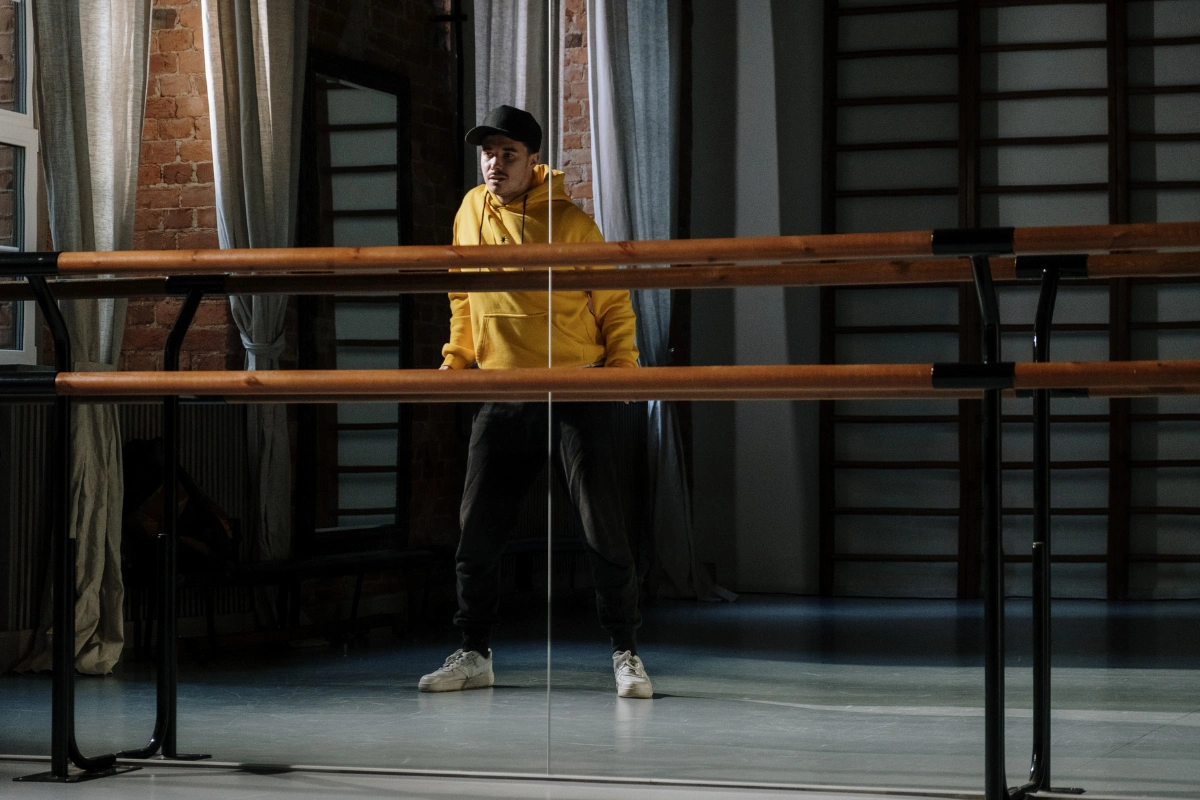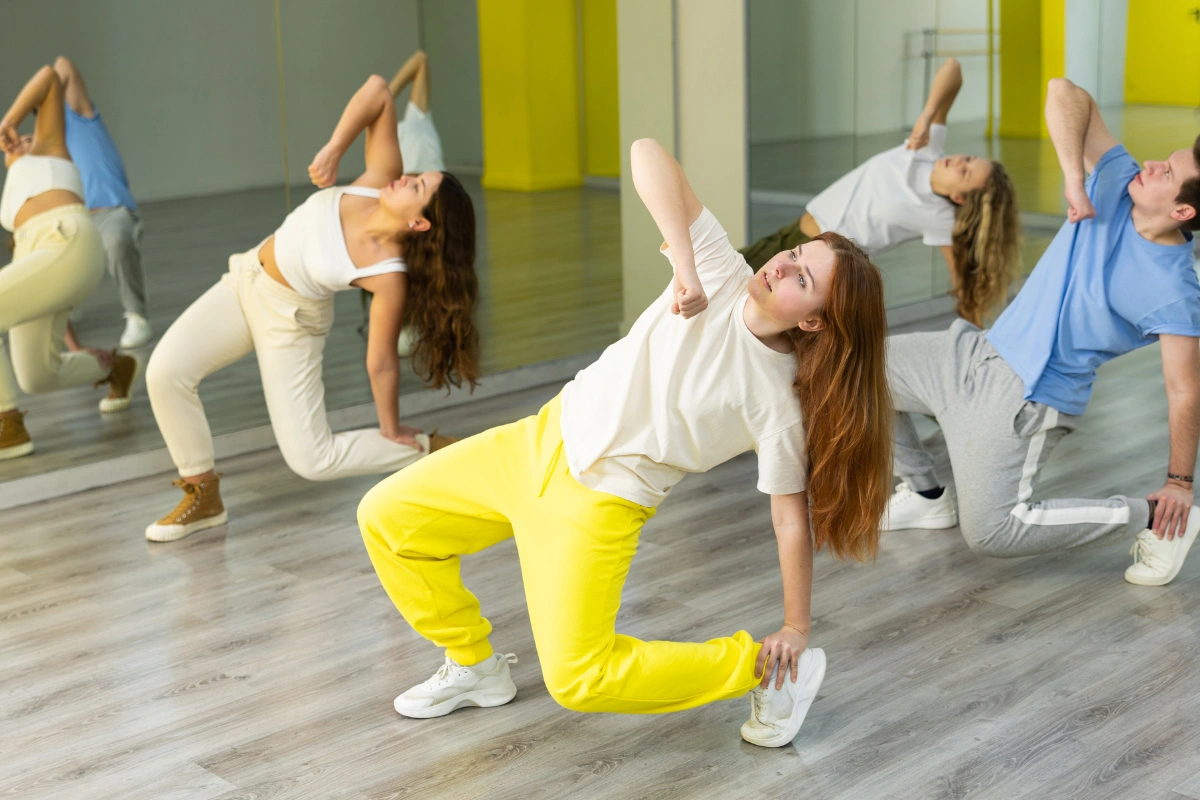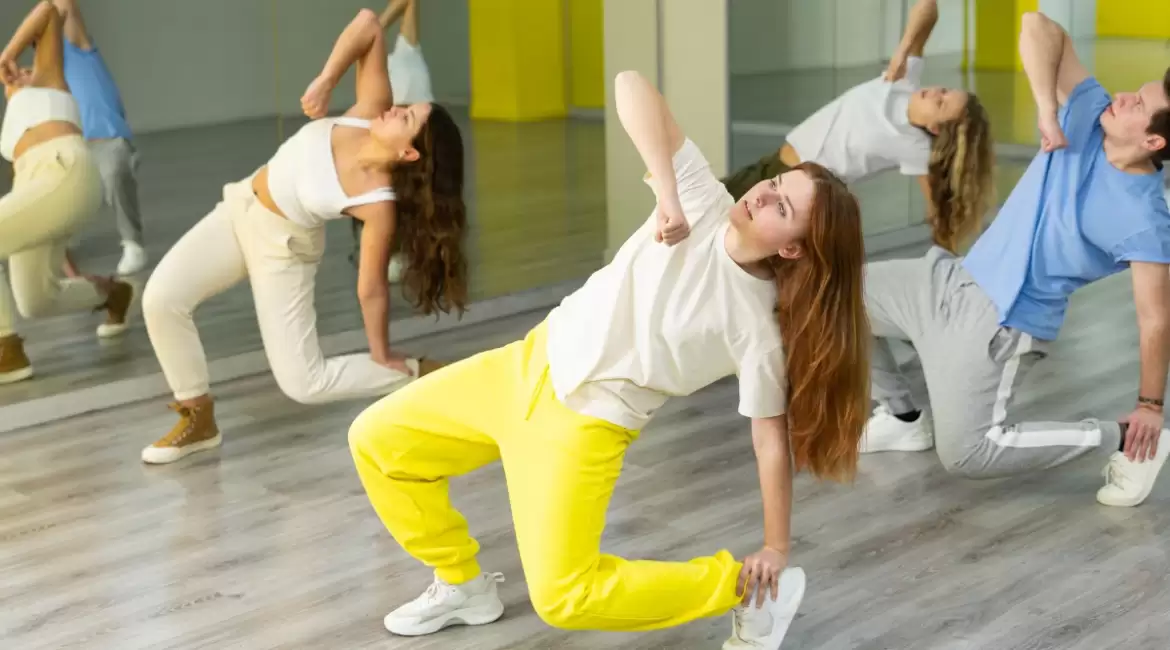Finding the perfect soundtrack is an essential aspect of every dancer’s journey, whether you’re perfecting choreography, exploring new styles, or simply seeking inspiration. In the ever-evolving landscape of music streaming platforms and digital libraries, navigating the vast array of options can be overwhelming. However, armed with the right strategies and tools, dancers can uncover a treasure trove of fresh beats and melodies to elevate their performances. In this guide, we’ll explore some of the best methods for dancers to discover new music, from leveraging streaming platforms’ personalized recommendations to tapping into underground communities and remix cultures. Whether you’re a seasoned professional or just starting out, these techniques will help you curate a playlist that sets the stage for your next unforgettable dance journey.
Apple Music
Apple Music offers a vast array of musical selections within its expansive library. However, when compared to other music platforms, it tends to prioritize music that dominates the “Top 100s charts”.
Despite this emphasis on popular hits, Apple Music distinguishes itself with “Beats 1 Radio”, a dynamic live-streamed station hosting various music shows. This platform also extends support to emerging labels like Soulection, providing them with airtime on Beats 1.
Beyond its live-streaming capabilities, Apple Music caters to the preferences of its users by enabling offline listening for saved music, ensuring uninterrupted enjoyment regardless of connectivity.
In terms of pricing, Apple Music offers a generous 3-month free trial period, with a subsequent subscription fee of $9.99 per month. Students can benefit from a discounted rate of $4.99 per month, while families can opt for a shared plan priced at $14.99 per month, accommodating up to 6 individuals at a cost of $2.50 per person.

Spotify
Spotify, one of the leading music streaming services, offers a tiered membership system catering to various user preferences and needs. While anyone can sign up for a free Spotify account, this option comes with a trade-off: frequent interruptions in the form of advertisements during music playback.
From my personal usage, I’ve observed that the free account typically allows for streaming of up to approximately 6 songs before an advertisement break occurs. Additionally, users of the free tier are constrained to utilizing the “shuffle play” feature on the mobile app, which can be limiting when trying to listen to specific songs. Often, users find themselves compelled to shuffle through entire albums in search of their desired track.
Furthermore, although free users can skip tracks, they are restricted to a maximum of 6 skips per listening session, further constraining their control over their music experience.
In contrast, opting for a paid Spotify Premium account opens up a world of benefits. Not only does it eliminate advertisements entirely, but it also grants users unlimited skips, allowing for a seamless and uninterrupted listening experience. Moreover, Premium members gain access to curated playlists and the Discover Weekly feature, which suggests new music based on their listening habits, enhancing their exploration of diverse musical genres and artists.
In terms of pricing, Spotify Premium offers a one-month free trial period, after which the subscription fee is $9.99 per month. Students can avail themselves of a discounted rate of $4.99 per month, making premium features more accessible to a broader demographic. Additionally, families can opt for a shared plan priced at $14.99 per month, accommodating up to 6 members, similar to Apple Music’s family plan.
Like other streaming platforms, Spotify allows members to download music for offline listening, ensuring that users can enjoy their favorite tunes even without an internet connection. This flexibility adds to the appeal of Spotify as a versatile and user-friendly music streaming service.
SoundCloud
SoundCloud, a renowned platform in the realm of music streaming, boasts a distinctive allure, particularly for dancers, owing to its rich and diverse musical repertoire.
A standout feature of SoundCloud lies in its inclusive approach to content creation, whereby any subscriber can upload their own compositions. This democratization of music sharing fosters an environment ripe for experimentation across a multitude of genres, resulting in a vibrant tapestry of sonic exploration.
Moreover, SoundCloud’s unique “repost” feature, alongside its robust “Discover” functionality, sets it apart from its competitors, facilitating organic exposure and discovery of new talent and sounds within its expansive ecosystem.
In terms of advertisement, users on the free tier encounter minimal disruptions, typically in the form of two brief, one-minute advertisements promoting SoundCloud Go+ or Pro Unlimited, occurring at intervals of approximately 20 minutes.
However, while the free membership offers an ad-light experience, it comes with certain limitations. Notably, users are unable to save music for offline listening, and access to certain tracks is restricted to SoundCloud GO+ subscribers.
Regarding pricing, SoundCloud offers a tiered subscription model catering to different user needs. SoundCloud GO+ is available at $9.99 per month, granting subscribers access to features like offline listening, exclusive “GO+” tracks, and the ability to upload their own content.

For producers seeking a more comprehensive package, the SoundCloud Pro Unlimited subscription is available at $15 per month or $135 per year, offering substantial savings for the annual plan. This subscription tier removes all restrictions on content upload, provides access to detailed statistics, and includes all the perks of SoundCloud GO+.
In contrast, while YouTube serves as a valuable resource for discovering new music, particularly for dancers who follow fellow artists and creators, it comes with the caveat of frequent copyright-related issues. Videos may be subject to muting or removal due to copyright infringement, underscoring the inherent risks associated with relying solely on YouTube for music discovery.
Repost on SoundCloud
SoundCloud serves as an expansive hub for music exploration, offering users a platform to discover new sounds and emerging artists. Beyond merely accessing mainstream hits, SoundCloud’s standout feature lies in its inclusive approach to content creation, allowing anyone to share their original compositions.
For those inclined towards staying ahead of the curve and uncovering underground talent before it reaches mainstream recognition, SoundCloud proves indispensable. Within its vast repertoire, I’ve stumbled upon gems crafted by familiar names such as David Lee and John Antonio, alongside original compositions from exceptionally talented collectives like Fête, Future Society Collective, and Soulection.
Central to SoundCloud’s appeal is its “repost” feature, which empowers users to share others’ content with their own followers, akin to “sharing” a post on Facebook. When an artist you follow reposts a track or album from another creator, it appears in your feed, facilitating organic discovery.
The essence of SoundCloud’s music discovery lies in engaging with reposted tracks on your feed. By following the artists behind these reposts, you unlock a treasure trove of their original compositions, as well as curated selections from artists they admire.
Discover on SoundCloud
Engaging with SoundCloud’s “Discover” feature has revolutionized my music exploration journey, providing seamless access to a diverse array of artist profiles. This accessibility proves invaluable, particularly during moments of choreographic stagnation, offering a refreshing injection of creativity when faced with a choreo block.
Beyond the realm of reposts, the “Discover” tab emerges as a veritable treasure trove for unearthing new musical gems. Leveraging sophisticated algorithms, SoundCloud curates personalized song suggestions based on your previous likes and reposts. What sets SoundCloud’s recommendations apart is its holistic approach, transcending mere genre categorization to encompass nuanced elements such as tempo and syncopation. This nuanced understanding ensures that the suggested tracks resonate authentically with your artistic sensibilities, sparking inspiration and invigorating your creative process.
Should you find yourself grappling with a particular song’s suitability for choreography or yearning for a departure from your customary style, SoundCloud emerges as the ultimate solution. With its vast repository of diverse genres and offerings from eclectic artists, SoundCloud serves as a boundless reservoir of inspiration waiting to be tapped. Whether seeking a faster tempo, a different genre, or simply craving fresh musical perspectives, SoundCloud empowers you to navigate through an eclectic spectrum of sounds, each poised to ignite new movements and narratives within your choreography.
Remixes on SoundCloud
SoundCloud offers a boundless realm of creativity, particularly evident in its vast collection of remixes that breathe new life into familiar tunes. One of the most remarkable aspects of SoundCloud is the sheer abundance of remixes spanning a multitude of genres and styles, each serving as a testament to the platform’s vibrant and diverse community of artists.
Many of the creators I follow on SoundCloud demonstrate a penchant for remixing, harnessing the power of samples from old songs to craft entirely fresh and innovative covers. One such example is Esta, whose remixes infuse classic tracks with a contemporary flair, ushering them into the modern era with renewed vigor and relevance.
Moreover, artists like Flamingosis and Boogie Belgique are renowned for their instrumental compositions, which skillfully blend random samples to create captivating sonic landscapes. These instrumental tracks not only showcase the artists’ technical prowess but also offer a unique perspective on remixing, where the focus shifts from vocal reinterpretations to the manipulation of diverse musical elements.
Using Music from SoundCloud to Practice freestyling
Utilizing music from SoundCloud as a tool for honing freestyle dance skills has been a transformative journey, enabling me to delve into the raw essence of self-expression through movement. Unlike structured dance forms, freestyle dance transcends conventional instruction, demanding a fluidity of expression that can only be cultivated through personal exploration and experimentation.
SoundCloud’s expansive music library and streamlined interface have been instrumental in facilitating my solo dance practice sessions, allowing me to immerse myself in a diverse array of sounds and genres with ease. The platform’s minimalist layout creates an immersive environment conducive to uninhibited creativity, empowering me to push the boundaries of my dance repertoire and explore new realms of movement expression.

When seeking to develop fresh concepts or refine existing techniques for freestyling, I embark on freestyle sessions accompanied by my SoundCloud feed, immersing myself in the experience of dancing to the rhythm of at least five unfamiliar songs consecutively. Freestyling to music I’ve never heard before presents an exhilarating challenge, catching me off guard and fostering spontaneous moments of uninhibited expression.
While navigating this uncharted musical terrain, I encounter unexpected drops and syncopated rhythms that push me out of my comfort zone, prompting me to adapt and respond instinctively. Although there are instances where I may misjudge a musical cue or stumble upon unexpected static noise, these moments of unpredictability serve as valuable opportunities for growth, pushing me to embrace the spontaneous flow of movement without reservation.
Through this process, I’ve honed various freestyle techniques, from intricate tutting combinations to sharp dime stops and fluid transitional movements inspired by floorwork. Furthermore, I’ve expanded my range of motion to create more expansive and visually captivating sequences, painting larger-than-life pictures with my body in response to the dynamic ebb and flow of the music.
To further challenge myself and deepen my connection to the music, I seek out tracks that are exceptionally unpredictable or feature intricate syncopation, closing my eyes during freestyle sessions to heighten my sensory awareness and foster a deeper kinesthetic bond with the music. This immersive approach not only enhances my ability to interpret and respond to nuanced musical cues but also cultivates a profound sense of embodiment, anchoring my movements in the rhythmic pulse of the music.
Beyond freestyling, I leverage SoundCloud’s diverse musical offerings to refine specific dance skills, such as executing tutting sequences in sync with time-signature changes or mastering intricate wave techniques in response to the intricacies of the music. Each practice session becomes an opportunity for growth and self-discovery, as I continue to push the boundaries of my creative expression and forge a deeper connection between body and sound.
Waveform Representations
Waveform representations on SoundCloud offer a fascinating window into the structure and dynamics of a song, enhancing the listening experience by providing a visual roadmap of its progression. This feature, embedded within SoundCloud’s user-friendly design, grants users the ability to visually analyze the waveform of any song they’re listening to, empowering them with newfound insights into its intricate composition.
The waveform display serves as a tangible representation of the song’s evolution, allowing users to discern patterns in volume fluctuations, identify prominent musical peaks, and anticipate shifts in tempo or intensity. By visually mapping out the ebb and flow of sound, listeners gain a deeper understanding of the song’s architecture, enabling them to navigate to specific sections with precision and ease.
Despite the wealth of information conveyed by waveform representations, they offer only a partial glimpse into the song’s overall complexity. While they provide valuable cues about changes in volume and rhythm, they cannot fully capture nuanced elements such as pitch modulation. Pitch changes, which play a crucial role in shaping the emotional trajectory of a song, remain elusive to visual interpretation and can only be perceived through attentive listening.
Thus, while waveform representations offer invaluable insights into the structural dynamics of a song, they do not render it entirely predictable. The magic of music lies in its ability to surprise and captivate, transcending mere visual representations to evoke emotional responses that defy quantification. In this way, while waveform displays enhance our understanding of music, they also remind us of the ineffable essence that makes each listening experience unique and unpredictable.
Summary
Dancers rely on music to fuel their creativity and expression, but finding new tracks can be daunting in today’s digital age. This guide offers insights into effective strategies for discovering fresh beats and melodies. From harnessing personalized recommendations on streaming platforms to tapping into underground communities and remix cultures, dancers can curate playlists that inspire and elevate their performances. Whether you’re a seasoned professional or a beginner, these methods will help you stay ahead of the curve and find the perfect soundtrack for your dance journey.


Leave a reply